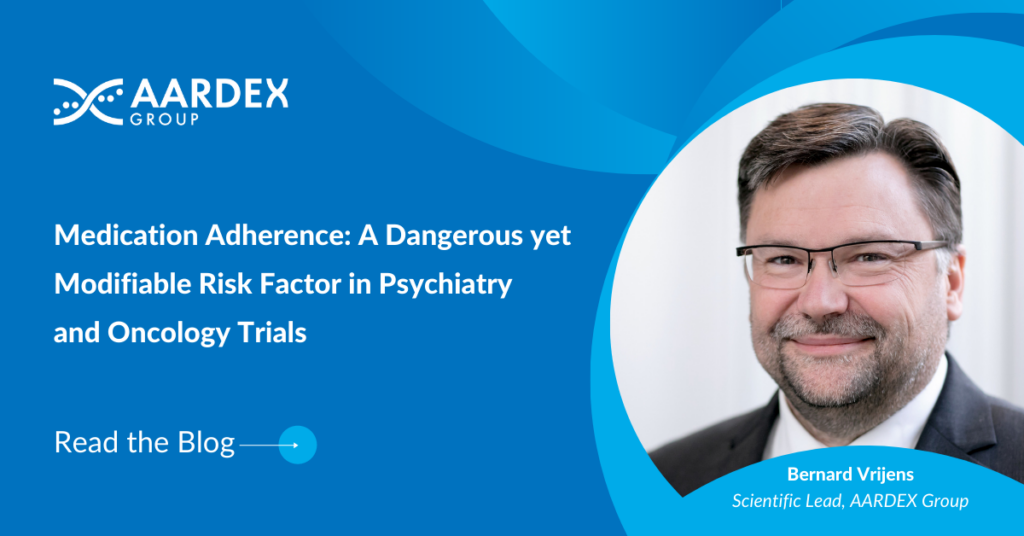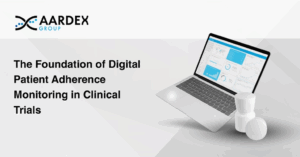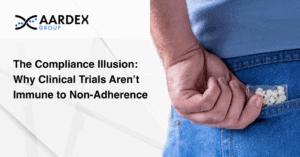When it comes to medication adherence in psychiatry and oncology trials, the stakes are high – not taking medicines as prescribed can have life-altering or even life-threatening consequences. As such, we often assume almost perfect adherence. Unfortunately, this could not be further from the truth.
The reality is that poor medication adherence is a universal problem that cuts across therapeutic areas. It is incredibly complex and can be compounded by the symptoms of the medical condition and the impact of the disease.
What’s more, it is exceedingly common in psychiatry and oncology clinical trials, contributing to the high failure rate in both settings.
As with all problems of this magnitude, there is no one size fits all solution. Successful approaches must factor in a range of considerations, including the trial design and protocol, the characteristics of both the investigational product and the study participants, and the symptoms and impact of the medical condition under the spotlight.
Traditional methods of adherence monitoring, such as pill count and self-report, do not consider such intricacies. They are subjective, open to bias, and provide but a snapshot of medication-taking behavior between interactions. They also place an additional burden on patients and site staff, detracting from their utility.
Digital adherence monitoring is different. It offers a holistic framework that can inform individualized interventions even in challenging therapy areas such as psychiatry and oncology.
Adherence in Psychiatry
Studies have repeatedly demonstrated the association between different measures of medication adherence and a wide variety of psychiatric outcomes. Poor adherence can lead to illness exacerbations and symptom relapses, comorbidity, or leave people less responsive to subsequent treatment.1
Crucially, not taking medicines as prescribed has consistently been linked with poorer outcomes, including hospital admission, violence, and premature mortality.
One study, which analyzed the medical records of 1,646 patients with schizophrenia/schizoaffective disorder admitted to the hospital, found that non-adherence was the primary reason for acute care in 58.6% of cases.2
Non-adherence is a risk factor for violence in psychosis and has been called the “strongest modifiable protective factor” against suicide in people with bipolar disorder.3
Yet despite the magnitude of the consequences, poor adherence is common. A recent systematic review and meta-analysis found psychotropic medication non-adherence rates of just 56% in schizophrenia, 50% in major depressive disorders, and 44% in bipolar disorders.4
The reasons for poor adherence are as varied as they are complex across therapy areas, but they are compounded by psychiatry-specific factors.
These might include poor memory, failure to build strong habits, delusional belief systems, or a reduced motivation for self-care, for example. Furthermore, there can be a self-stigma associated with receiving treatment for mental illness, and a lack of social support can also play a role.
Adherence in Oncology
Adherence to oncology medications is pertinent for several reasons. It’s worth remembering that these therapies can induce psychiatric side effects, such as depression, which only feeds into the complexity detailed above.
But a crucial consideration is the increasing development of oral, at-home chemotherapies. In 1995, there were just eight oral chemotherapies on the market. By 2020, there were more than 80 new cancer drugs that had been specifically designed as an oral medicine, without an intravenous equivalent. The list of oral oncolytic continues to expand each year, with a half dozen or more new drugs being introduced annually. 5
This remote method of administration increases the risk of underdoses, overdoses, dosing errors, and medication holidays. It leaves patients to wrestle with unpleasant side effects, such as nausea, diarrhea, and fatigue, as well as complex, lengthy treatment plans, and cancer fatigue on their own.
As such, adherence to these expensive, life-saving treatments is often low: studies have cited rates of 20% to 53% in chronic myeloid leukemia (CML) and just 6% to 35% in acute lymphoblastic leukemia.6
This matters because even the most advanced medicine in the world cannot tackle a disease if people don’t take it. We know, for example, that CLL patients who take fewer than 90% of their prescribed imatinib tablets have clearly inferior major molecular response rates when compared to adherent patients.6
Cancer specialists, then, are increasingly aware of the need for routine adherence safeguards when using oral oncology agents.
Clinical Trials and Medication Event Monitoring
Failure rates in psychiatry and oncology clinical trials are high – between 2011 and 2020, the overall success rate of development candidates in psychiatry was 7.3%, and 5.3% in oncology.7
If we are to develop drugs of the future, we need to give trials every opportunity to succeed. And while there is a myriad of reasons for study failure, many cannot be modified. Luckily, poor medication adherence, which can lead to underestimations of product efficacy and drain study power, can.
Developers know that traditional adherence monitoring methods are not sensitive enough to detect issues. They know that they do not collect accurate data, and do not enable the individualized interventions that are crucial when considering the multitude of contributing factors in these complex therapy areas.
Digital monitoring is different. Smart packaging, such as connected blister packs, can collect essential information, such as whether the dose has been removed from the packet, the time and date, the type of drug, batch number, and expiration date.
Data is then transmitted to a cloud-based platform for sophisticated analysis. It results in visualizations that allow study teams to spot erratic dosing patterns, then design individualized interventions that take the complexity of poor medication adherence into account.
Crucially, this frictionless approach provides a holistic, continuous view of medicines-taking behavior throughout a trial, without placing an additional burden on participants or site staff.
Future-Proof Method
Poor medication adherence is a dangerous yet common problem in both psychiatry and oncology. This contributes to non-treatment response and low clinical trial success rates, and results in unnecessary treatment changes or escalation, disease progression, and poor outcomes.
Luckily, thanks to the emergence of digital medication event monitoring, poor medication adherence is now a modifiable risk factor. This new approach provides evidence-based insights that can help health professionals identify those at risk and deliver tailor-made interventions – all before the problem has a chance to drain study power and impact on data integrity.
References:
- Semahegn, A., Torpey, K., Manu, A., Assefa, N., Tesfaye, G., & Ankomah, A. (2020). Psychotropic medication non-adherence and its associated factors among patients with major psychiatric disorders: a systematic review and meta-analysis. Systematic reviews, 9(1), 1-18.
- San, L., Bernardo, M., Gómez, A., Martínez, P., González, B., & Peña, M. (2013). Socio-demographic, clinical, and treatment characteristics of relapsing schizophrenic patients. Nordic journal of psychiatry, 67(1), 22-29.
- Witt, K., Van Dorn, R., & Fazel, S. (2013). Risk factors for violence in psychosis: systematic review and meta-regression analysis of 110 studies. PloS one, 8(2), e55942.
- Semahegn, A., Torpey, K., Manu, A., Assefa, N., Tesfaye, G., & Ankomah, A. (2020). Psychotropic medication non-adherence and its associated factors among patients with major psychiatric disorders: a systematic review and meta-analysis. Systematic reviews, 9(1), 1-18.
- Wimbiscus,B., Targeted Oncology, January 21, 2019
- Bouwman, L., Eeltink, C. M., Visser, O., Janssen, J. J., & Maaskant, J. M. (2017). Prevalence and associated factors of medication non-adherence in hematological-oncological patients in their home situation. BMC cancer, 17(1), 1-8.
- Clinical Development Success Rates and Contributing Factors 2011–2020. (2021). Available at: https://pharmaintelligence.informa.com/~/media/informa-shop-window/pharma/2021/files/reports/2021-clinical-development-success-rates-2011-2020-v17.pdf
About the Author
Bernard holds a PhD from the Department of Applied Mathematics and Informatics from Ghent University, Belgium. As Scientific Lead at AARDEX ® Group, Bernard oversees the research and development of sophisticated analytical methods for monitoring participant medication-taking behaviours.
Along with providing guidance on adherence to Pharmaceutical, BioPharma, and Academic organizations, Bernard is a founding member of the International Society for Patient Adherence (ESPACOMP) and is an active member of several EU and US-funded consortiums that focus on adherence. Having co-authored several book chapters, over 100 peer-reviewed scientific papers, Bernard is considered an expert in his field.



